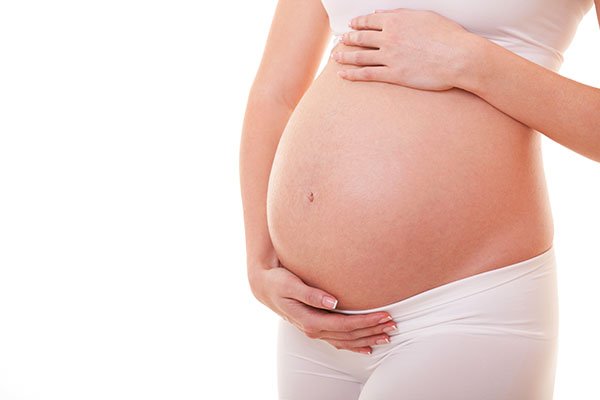Endometriosis And Pregnancy
Introduction:
Like many gynecological diseases, endometriosis can have an impact on fertility, but also on pregnancy. It is therefore important to be informed of the risks and to know the different solutions offered by medicine, so as to better understand the potential pregnancy.
Endometriosis and infertility
Although pregnancy is still possible, endometriosis makes conception more difficult. According to statistics from the Endo France association, between 30 and 40% of women with endometriosis experience infertility problems. And 20 to 50% of infertile women suffer from endometriosis.
However, there is no correlation between the severity of the disease and difficulty in conceiving. A woman with deep endometriosis can get pregnant naturally, whereas a woman with superficial endometriosis will need to use medically assisted reproduction (MAP).
Difficulties in getting pregnant
There are several options for women who have difficulty getting pregnant naturally.
Surgery is usually preferred to progesterone-based drug treatments. The operation consists of removing the various tissue adhesions and removing the various affected parts where possible. If pregnancy is desired, the ovaries are of course preserved. As soon as the treatment is sufficient to free the fallopian tubes, it is possible for a woman suffering from endometriosis to have a child naturally.
If the operation is not sufficient to restore fertility, ovarian stimulation will be offered, and if necessary, artificial insemination and then in vitro fertilisation.
Risk during pregnancy
Women with endometriosis are unfortunately more likely to have certain complications during pregnancy:
– An increased risk of ectopic pregnancy. Endometriosis can lead to the formation of scar tissue and adhesions that can interfere with the ability of the fertilized egg to reach the uterus.
– The risk of early miscarriage in the first trimester of pregnancy has been estimated to be 10% higher in women with endometriosis.
– Placenta praevia: misplacement of the placenta in the uterus which can cause severe blood loss during pregnancy and delivery.
– Higher risk of premature births as well as low birth weights.
– There is an increased risk of delivery by caesarean section.
Pain during pregnancy
It is important to know that during the first trimester of a pregnancy, symptoms can be amplified. They will fade as the pregnancy progresses, due to the change in hormones.
Some women may benefit from increased progesterone levels during pregnancy and therefore suffer little or no pain.
In the second trimester, new pain may appear, due to the development of the child. The lesions are pulled. The baby may also press on nodules and sometimes internal scars from an operation may be painful.
An increase in estrogen can also feed the endometrial growths and cause pain.
It is therefore normal for a woman with endometriosis to experience pain during pregnancy. However, in the event of bleeding or fever accompanied by severe pain, a gynaecologist should be consulted.
However, not all pregnancies in women with endometriosis are pathological. As a result, some pregnancies go off without a hitch and may well result in a vaginal delivery.
Endometriosis following pregnancy
Despite popular belief, pregnancy does not cure endometriosis, it simply puts the menstrual periods to rest for a given period.
Following childbirth, when the cycle resumes, the symptoms are again present. This resumption of the cycle and therefore of the symptoms can be delayed with breastfeeding.
Depending on the woman, the symptoms may return in a different way, sometimes the periods may be less abundant, the cycles more or less painful, etc.
Conclusion
As endometriosis is the leading cause of female infertility, it is not uncommon for a woman with endometriosis to have reduced hopes of conception. However, it should be remembered that these are only statistics and probabilities. Many women with endometriosis get pregnant naturally with pain-free pregnancies and easy deliveries.
In more difficult cases, there are various medical solutions.
Without downplaying the disease and its impact on a woman’s life, it is important to remember that endometriosis is not a fatality. In fact, with effective treatment, many women manage to become pregnant.
FAQ
What are the early signs of endometriosis that women should watch for?
Early signs may include severe pelvic pain, painful menstruation, pain during or after sexual intercourse, and difficulty getting pregnant. It is important to consult a doctor for an appropriate diagnosis.
Does surgery for endometriosis improve the chances of conception?
Yes, in many cases, surgery can improve the chances of conception by removing adhesions and endometriosis tissue, thus allowing better functioning of the reproductive organs.
Can endometriosis be prevented or its impact on fertility reduced?
There is no known method to prevent endometriosis. However, early diagnosis and treatment can help manage symptoms and preserve fertility.
What treatment options are available for women with endometriosis who cannot conceive naturally?
Options include assisted reproductive technologies (ART) such as ovarian stimulation, artificial insemination, and in vitro fertilization (IVF). These methods can increase the chances of pregnancy for women with endometriosis.
How does endometriosis affect pregnancy once a woman is pregnant?
Although endometriosis can increase the risk of certain complications during pregnancy, such as ectopic pregnancies, early miscarriages, placenta previa, and preterm births, many women with endometriosis can have successful pregnancies with appropriate medical monitoring.







